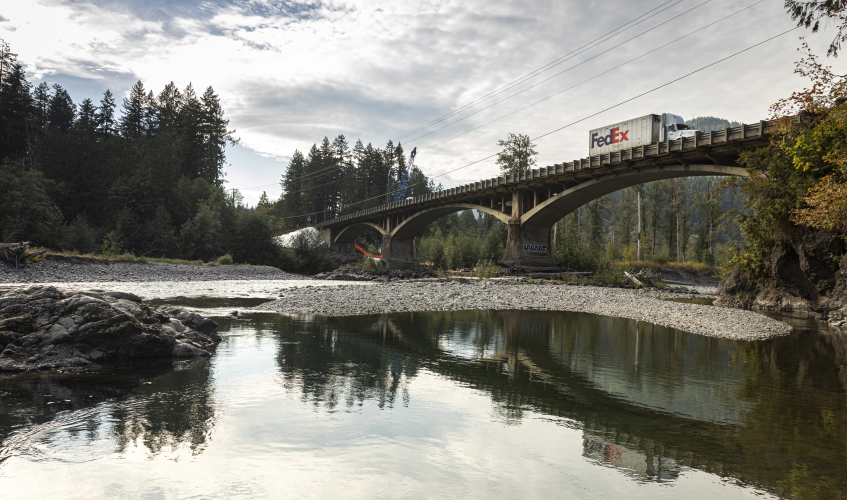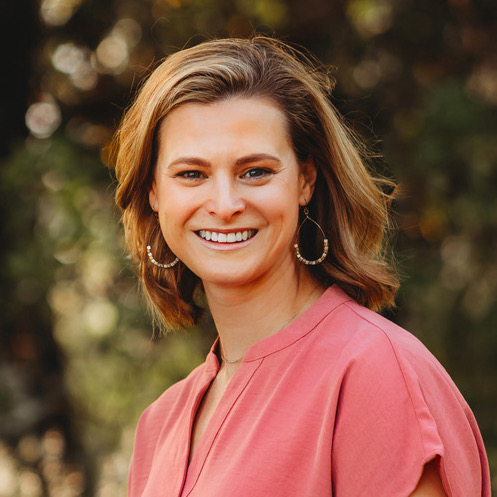Amy Sprague
October 15, 2024

Julia Lensing has applied her AI-based approach to the National Bridge Inventory. Photo credit: University of Washington.
Washington State faces significant challenges in maintaining its critical infrastructure, particularly due to the looming seismic threat from the Cascadia Subduction Zone. ISE PhD student Julia Lensing is tackling this complex issue by leveraging artificial intelligence to enhance both disaster preparedness and infrastructure resilience.

ISE PhD candidate Julia Lensing
From Army HR to critical infrastructure protection
Lieutenant Colonel Julia Lensing brings extensive Army experience to her PhD research. Her undergraduate degree from the US Military Academy in engineering management led her to later teach systems engineering there. Now based at Joint Base Lewis-McChord, her work as an HR officer over the past 17 years has given her unique insights into the human aspects of crisis management.
"In both the Army and disaster recovery, success hinges on relationships and clear communication," Lensing explains. This perspective drives her innovative approach to critical infrastructure protection, focusing on standardizing information and improving its accessibility across diverse stakeholders.
Harnessing AI for disaster preparedness
One arm of Lensing's research employs text mining and AI to analyze practical disaster reports, particularly those concerning the potential Cascadia earthquake. Her method synthesizes vast amounts of complex information, making it more accessible to researchers and practitioners alike.
"We're using everything from basic statistical analyses to complex language models like ChatGPT," Lensing says. "It's about finding new ways to extract insights from reports that often end up shelved and forgotten."
The research has already yielded crucial insights for Washington's preparedness efforts, identifying distinct differences in preparedness priorities between Washington and Oregon, and uncovering inconsistencies in vocabulary across the field.
"Unified communication is vital," Lensing stresses. "If you've heard the same message using consistent language multiple times, it becomes second nature – critical when you're in a crisis situation."
Enhancing bridge resilience through machine learning
Complementing her work on disaster preparedness, Lensing is collaborating with Professors Marc Eberhard and Jeffrey Berman in UW's Civil and Environmental Engineering department to apply machine learning in predicting bridge characteristics crucial for earthquake resilience.
"We're using AI to augment the National Bridge Inventory," Lensing explains. "By analyzing about 800 bridges in Washington, we're developing models to predict additional features that are labor-intensive to measure manually. This could dramatically improve our ability to simulate how a network of bridges might react in a major earthquake."
The project aims to quantify various sources of error – from machine learning predictions to human error and construction variances – to ensure the resulting predictions are reliable for disaster planning and response.
From academia to action
Emergency management professionals have responded positively to Lensing's multifaceted approach. While simpler tools appeal to experienced users, more complex AI-driven analyses offer broader accessibility – with appropriate cautions about AI-related risks.
The potential of Lensing's approach extends beyond the Pacific Northwest. She sees direct applications for the U.S. Army, particularly in analyzing After Action Reviews (AARs) from training exercises. "We could identify trends over time, persistent issues, or improvements," Lensing notes. "It's about learning from our experiences more effectively, whether in military operations or infrastructure management."
Lensing will return to the Military Academy as an assistant professor again. Her faculty adviser, Professor John Choe, reflects on the impact of her research: "Julia's innovative work is not just preparing Washington's critical infrastructure for potential disasters – it's reshaping how we approach emergency preparedness and infrastructure resilience across the board. As she will return to teach at West Point, she will bring this skillset and perspective to shape how we create safer, more resilient communities far beyond our state."